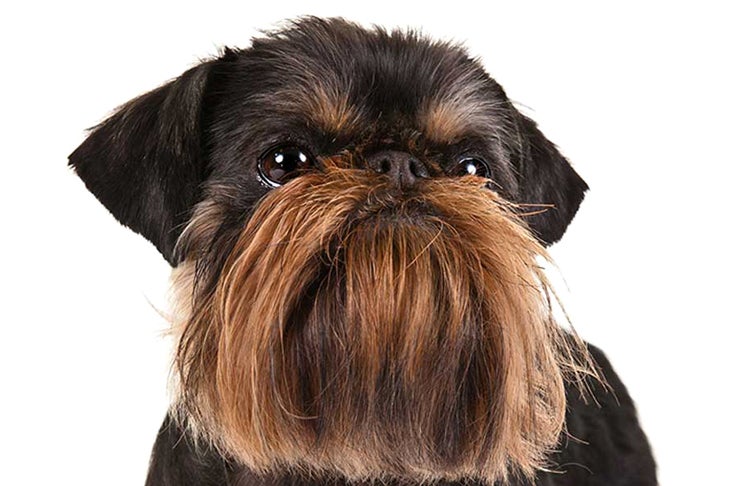
A recent experience ringside watching a novice reminded me that while conditioning is not necessarily part of the breed standard, good condition is crucial to winning. In this case, the judge withheld ribbons, and rightfully so, on a decidedly overweight dog. The response of the handler was “But why? She fits the standard.”
Here is a need for mentoring. Selling a show pup, especially to a novice, imparts an obligation to mentor, or find a mentor for, the new owner.
It is insulting to the judge and does a disservice to your dog to exhibit him looking shabby, shaggy, too fat, or even too skinny. Weight, cleanliness, muscle tone, nail length, and coat appearance all contribute to the overall condition of the dog.
To address the salient points of conditioning:
Weight—There is no excuse for an overweight dog in the ring. To get the pounds off, walking the dog, feeding less or a low-calorie food, and adding green beans to food are all proven approaches. Brussels Griffons can be charming beggars and prone to conveying that starvation is imminent. One must be strong. Exercise is a must.
Cleanliness—This is self-explanatory. Granted, it is unwise to bathe a rough coat immediately before a show, because the bath softens the coat, but done a week before will give the coat a chance to harden, and hopefully Griffy stays clean. If not, a light wipe-down should suffice.
Muscle tone—Our little Griffs may get enough exercise running around the yard, but a walk or time on the treadmill is better. Spending lots of time in a crate is not conducive to good muscle tone, nor proper weight maintenance.
Nail length—Griffons are not fond of having their nails trimmed, much as they detest having their beards combed. I have found that some do better with the nail clipper; others are more accepting of the grinder. For the squirmy ones, poking the nails through old pantyhose keeps the leg hair and pads out of the way of the clipper. However it works for you, they cannot walk properly, and paws do not appear neat if they are sporting claws.
Coat appearance—In the Brussels Griffon, coat is of prime importance. This is a hand-stripped breed. The rough-coated Griff should be stripped naked sometime early in life. This gets rid of puppy fuzz, which is soft and usually some funky color, and brings in the hard coat of clear color. In the smooth, while no stripping is needed, raking and of course proper diet will bring a shiny, healthy finish. This aspect of conditioning is addressed in the standard: “The rough coat is wiry and dense,” and on no account should it be woolly or silky. Without early stripping and regular flatwork, wiry and dense quickly gives way to woolly or silky.
The smooth coat should be tight and glossy, achieved by brushing, bathing, and occasional raking of undercoat. And while coat preparation with scissors or clippers is a fault according to the standard, this does not mean the ears cannot be neatened and (my personal preference) smooth whiskers trimmed.
Whether the dog was homebred or purchased, a lot of time and money went into bringing the pup to the ring. It behooves us to make that pup the best that he can be—not to mention, if we don’t, no points!
—Anne K. Catterson, American Brussels Griffon Association; June 2015 AKC Gazette

